Monastery of Agia Triada | Livadi
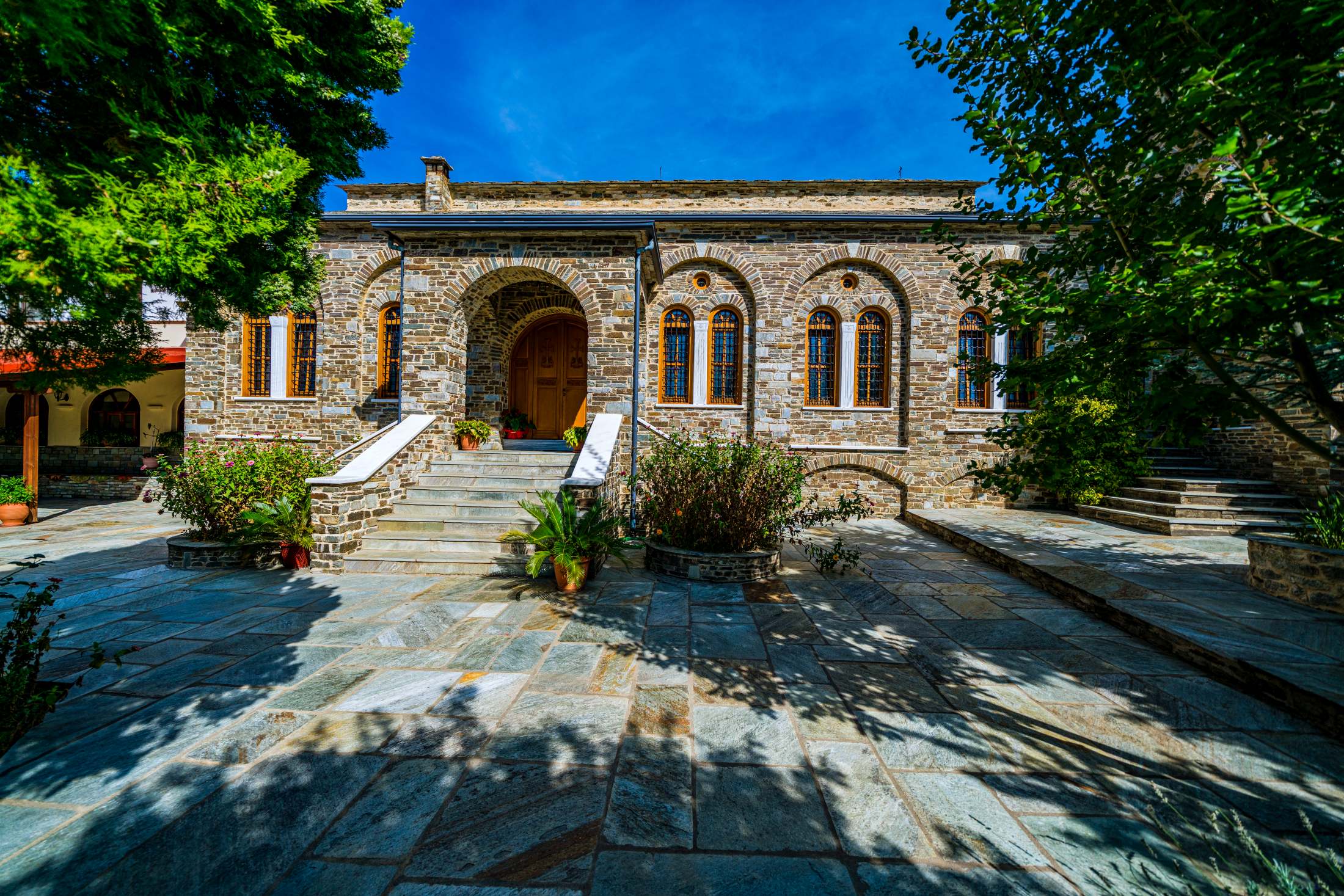
The Monastery of Agia Triada (the Holy Trinity) is situated near the village Livadi. The chapel of Agios Charalampos is an aisleless church with a gable roof and was renovated in 1761.
Hani Hatzigogou
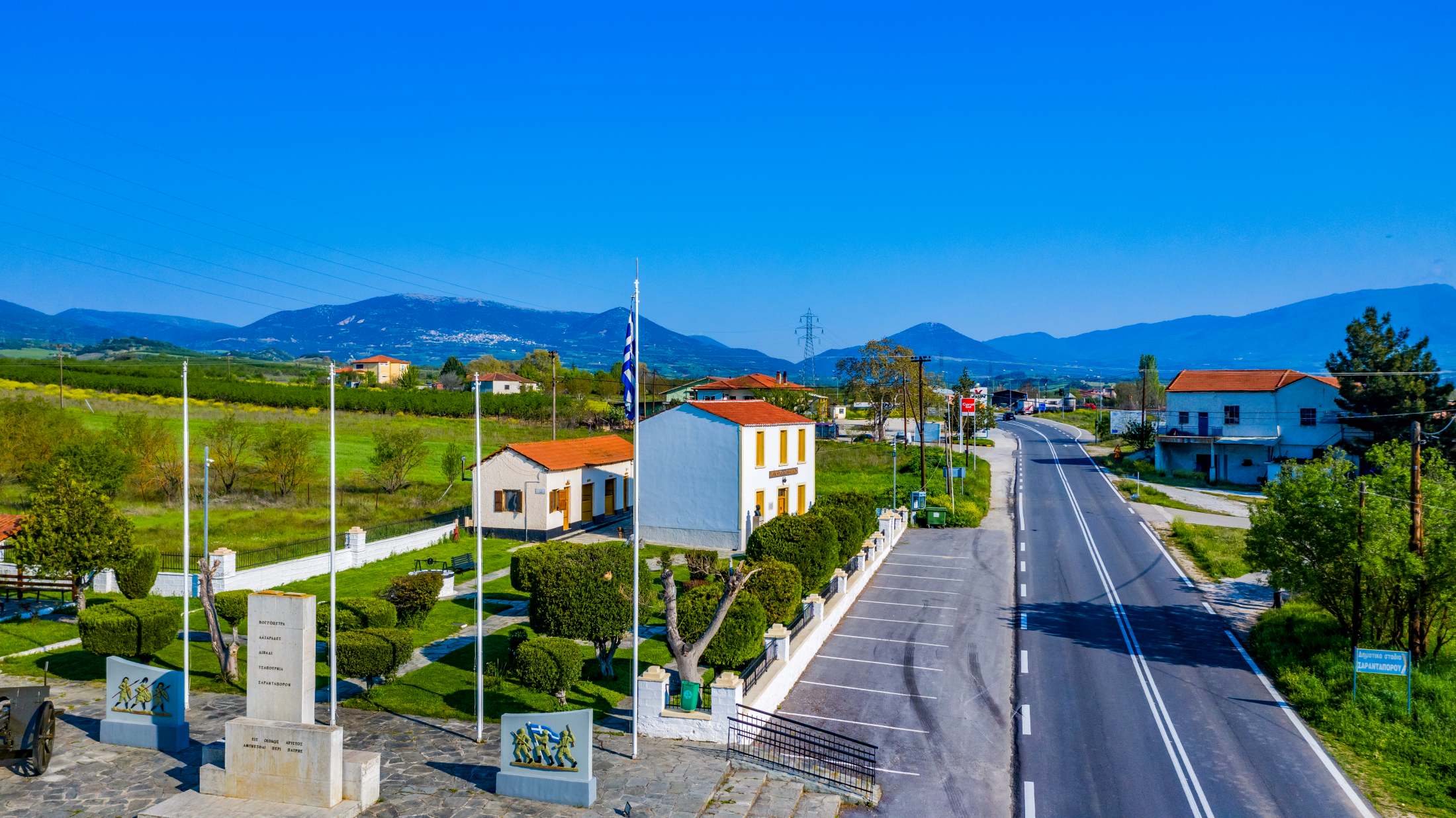
The inn of Chatzigogos. In 1912, during the battle of Sarantaporo, it was the commanding office of the Greek army; today it is used as a museum. The battle of Sarantaporo: The Greek army began the war against the Turks in Elassona. In October 1912, armies of the four Balkan allied countries simultaneously invaded Europe. […]
Monastery of Agios Antonios | Kokkinogi
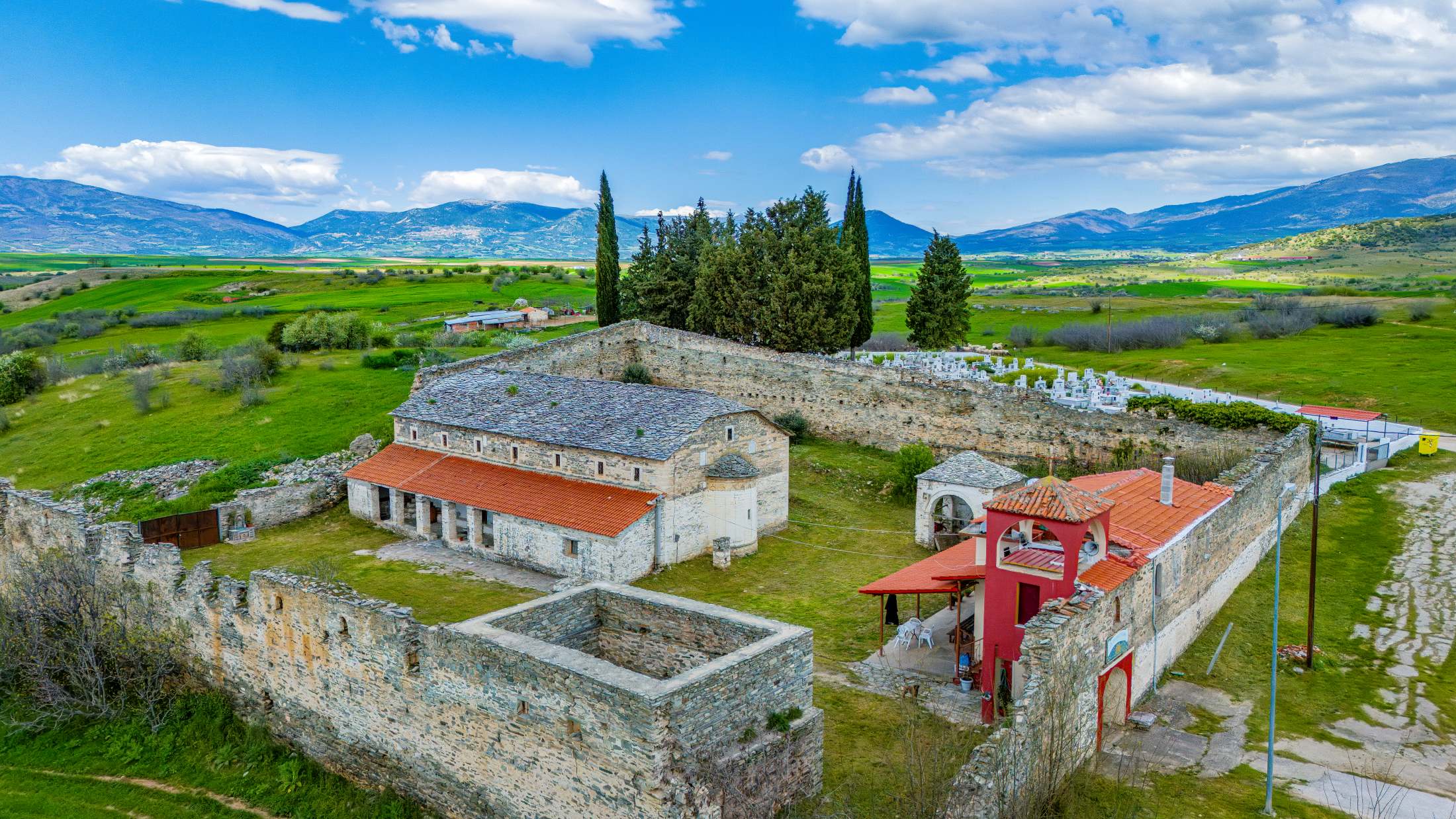
The post-Byzantine Monastery of Agios Antonios at Kokkinogi was built in 1755. The buildings around it are made of stone and there is a unique underground hideout under the church.
Livadi
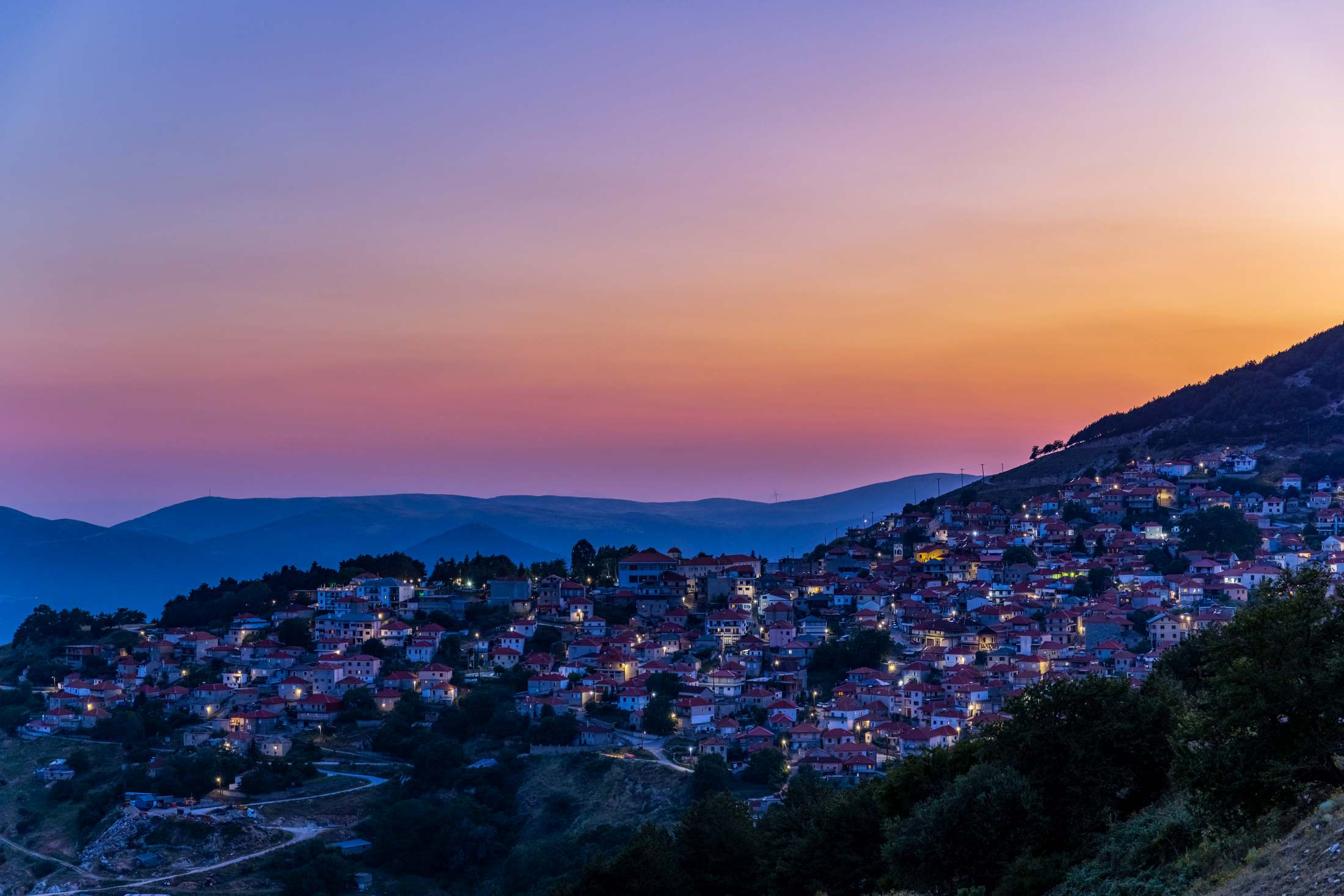
The historical village Livadi is located on the slopes of Titaros at an altitude of 1181m and is surrounded by the mountainsides of Pieria, Olympus and Komvounia. It overlooks the peaks and slopes of Olympus to the east, while its horizon extends to Koziakas to the south and west. The landscape is enchanting and extensive reforestations have been made in the area around the small town. Livadi was founded in the 17th century and witnessed great economic and intellectual growth in the 18th century. Its people took part in all the revolutionary movements in the region of Olympus.
Karya
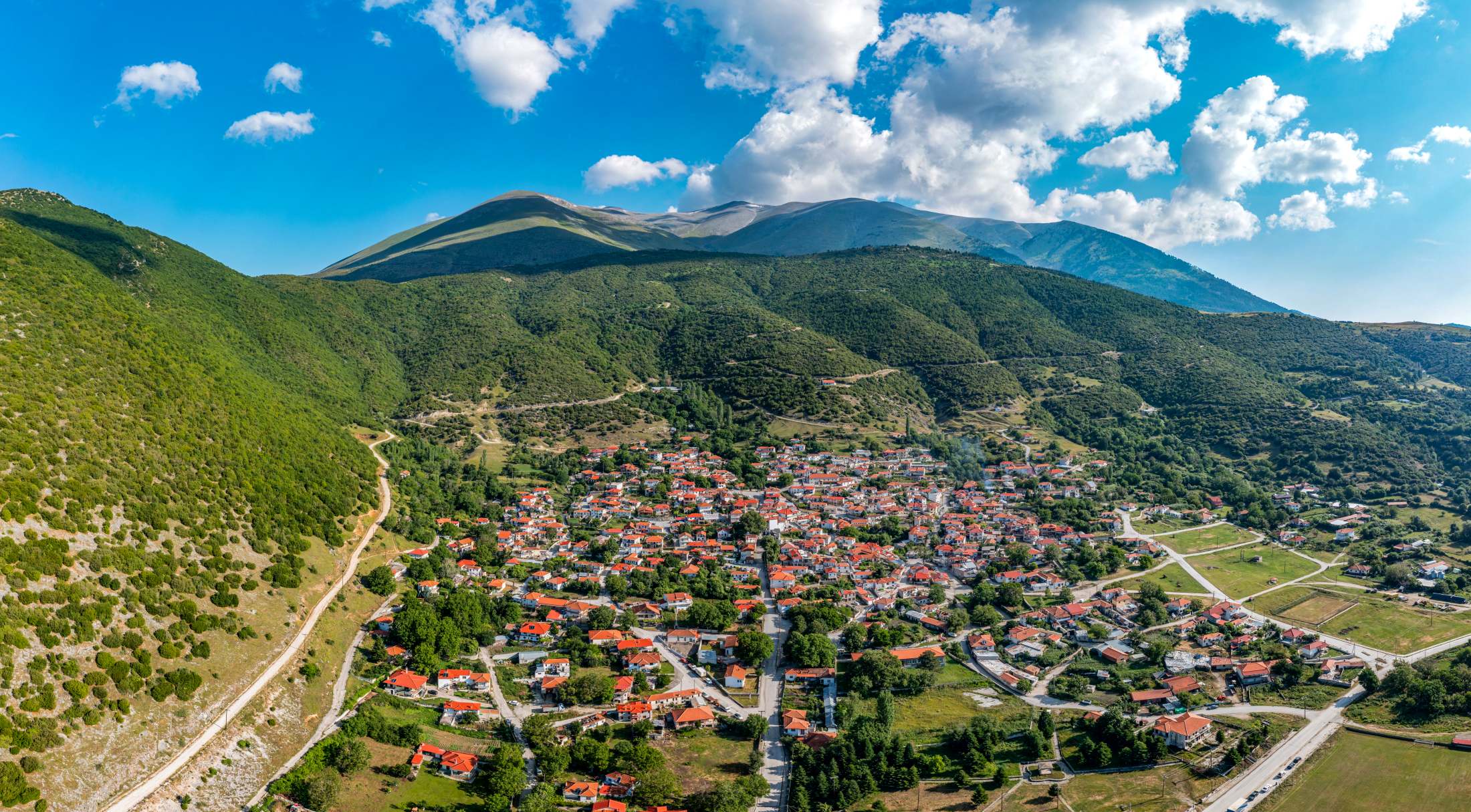
Karya village is cradled in a nook on Lower Olympus at an altitude of 900m and is a popular resort, due to its unique natural setting. It attracts a great number of visitors, who either stay in the area, or pass through Karya and the forests of Lower Olympus, on their way to the prefecture of Pieria and the beaches of Leptokarya. It is also the meeting point for climbers beginning their ascent to the peaks of Olympus: Metamorfosi 2,699m, Frangou t’ Aloni 2,677m and Ennea Pyrgoi 2,450m. North-east of the village there are woods with pine, fir, oak and beech trees covering 4,000 hectares.
Archaeological site of Pythio
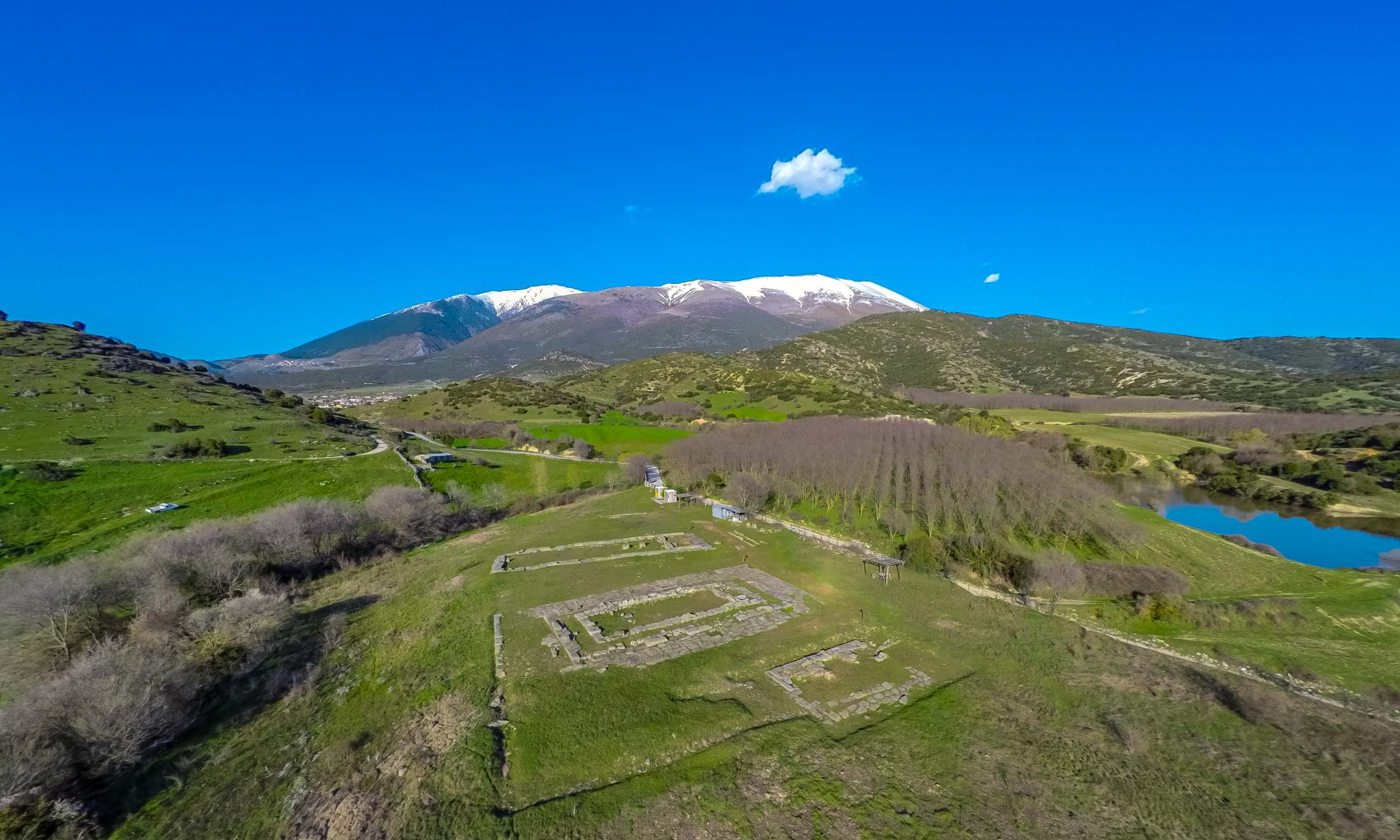
Excavations in Pythio revealed the temple of Poseidon from the 4th century BC and various other religious areas in its vicinity. The headless statue of a man was also found, identified as that of the god Apollo, and archaeologists are now striving to discover his glorious temple.
Church of Metamorphosis Sotiros | Dolihi
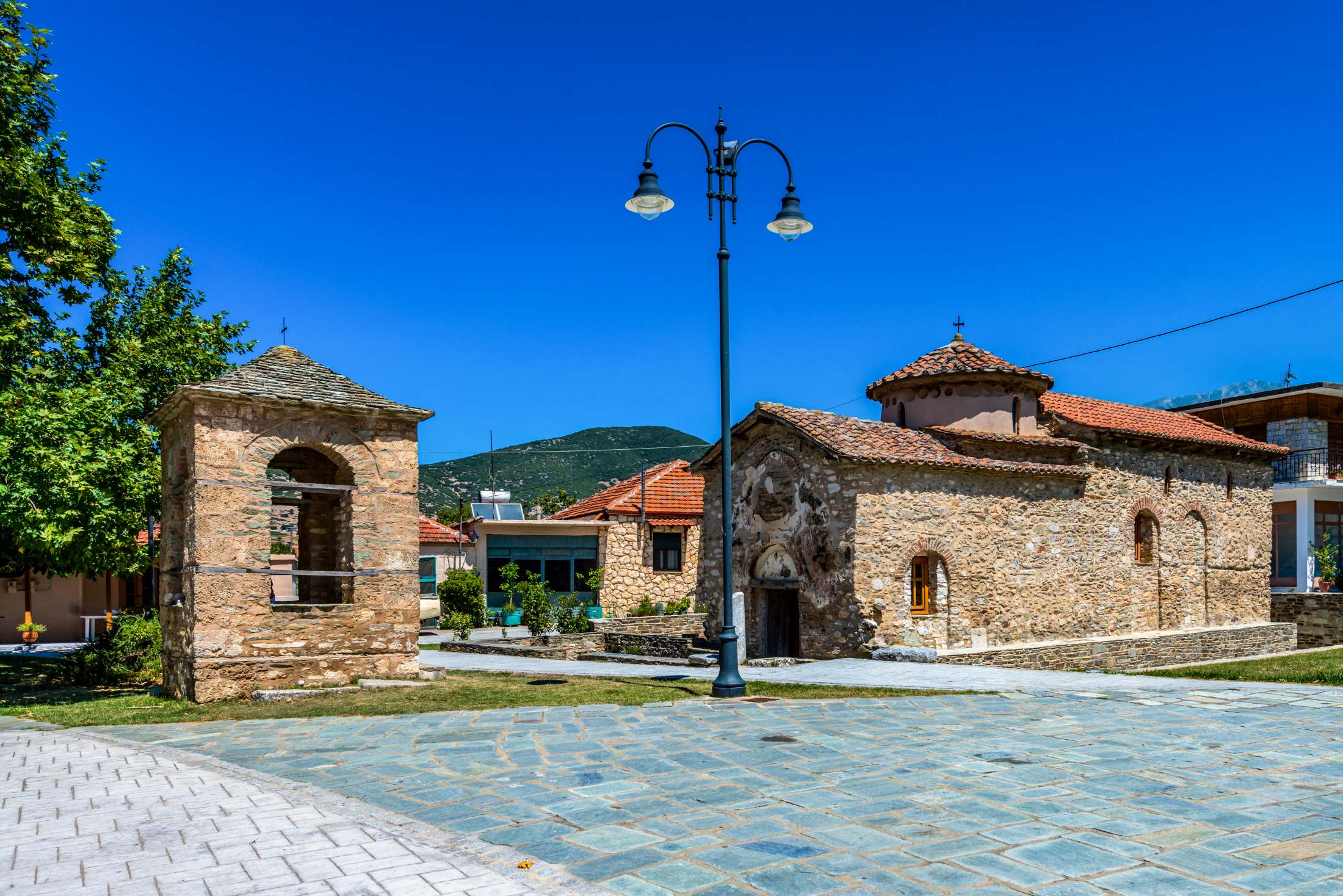
The Metamorfosi tou Sotira Church in Dolihi is a Byzantine monument of the 13th century. Magnificent murals adorn its interior.
Monastery of Panagia Olympiotissa | Elassona

The Holy Monastery of Olympiotissa is considered one of the largest monastic complexes in Thessaly. The monastery’s katholikon is a four-column church in honour of the Virgin Mary. It was founded in the 14th century. The murals were also crafted at that time, but were restored in 1643.
Elassona
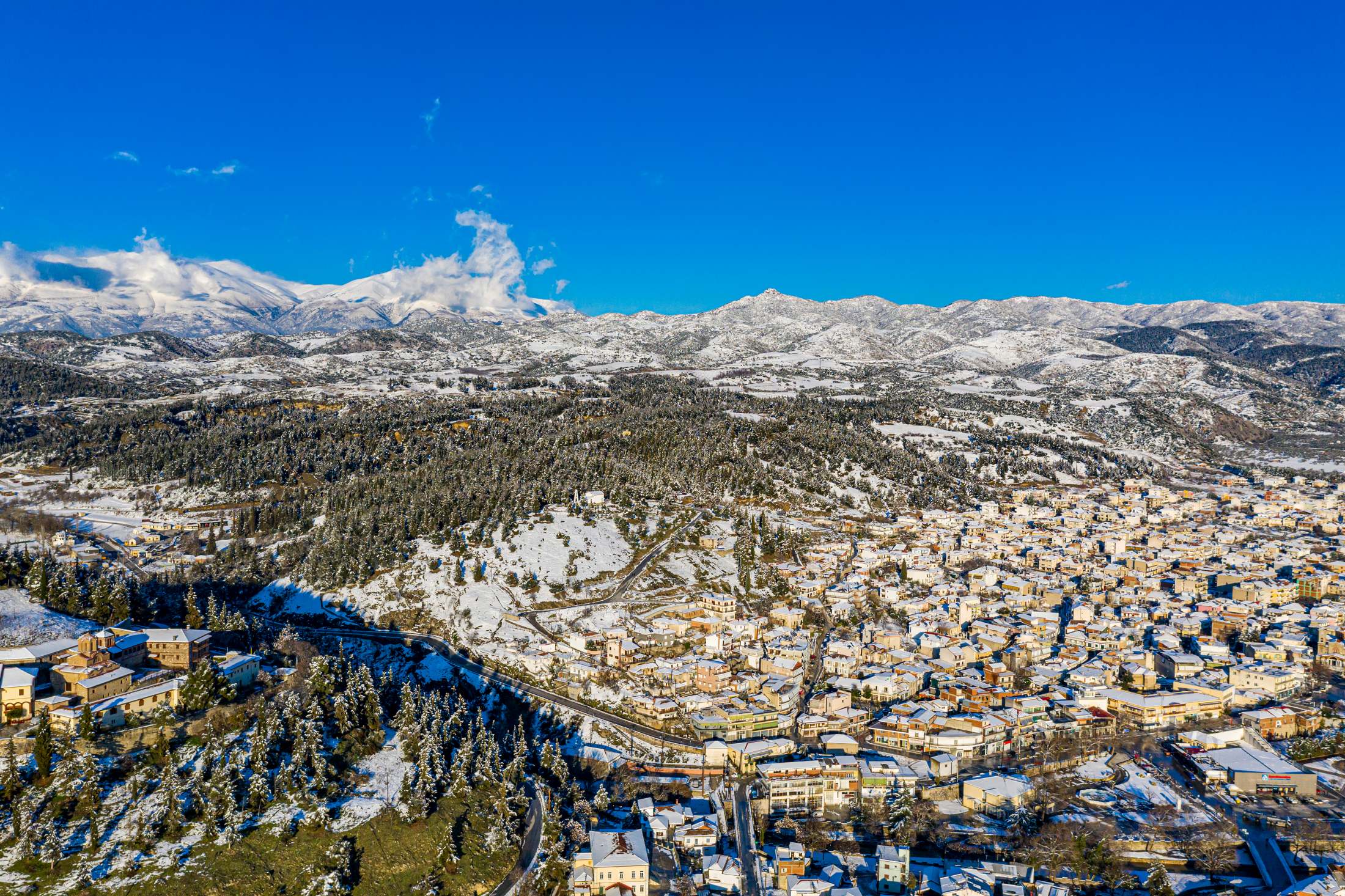
Elassona retained its Homeric name, Olosson, almost intact. Homer refers to it as “White Olosson”, the town that took part in the Trojan expedition with 40 ships, headed by Polypoetes. It was initially inhabited by the Lapiths, but owes its great significance to the Perrhaebi. It was the largest town and capital of Perrhaebia. The Byzantine city was built upon the ruins of the ancient city and continued its historical course.
The insufficient flat land and the weak irrigation at the region of Elassona forced a large part of the population to turn to stock breeding. The festival of feta cheese, a key ingredient of the local food chain, takes place at the end of September in Elassona with a variety of related activities and demonstrations of traditional cheese-making. During the three-day event a scientific congress is organized and sampling stands can be found at the central square.
Archaeological site of Azoros
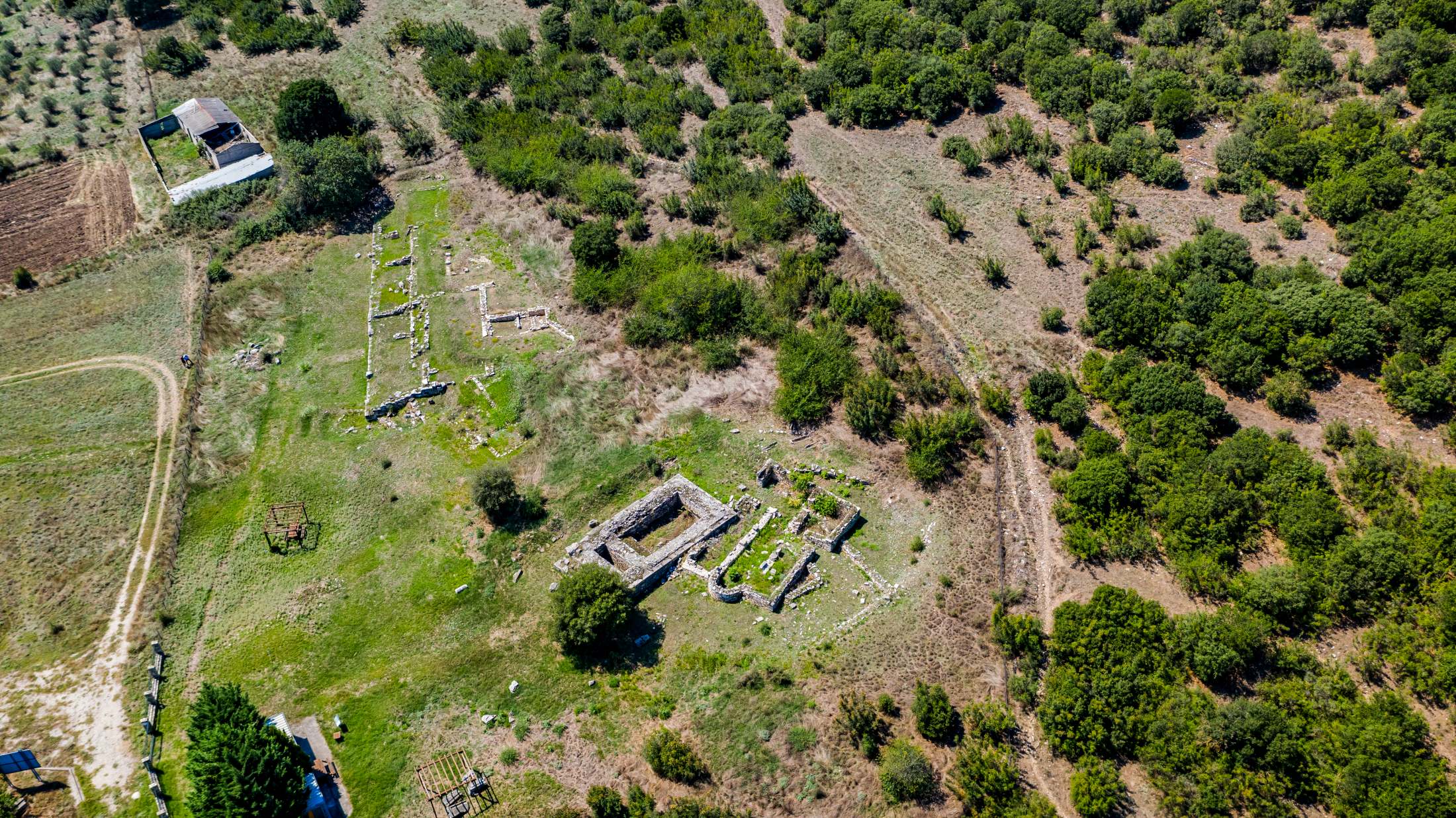
The excavations in Azoros began in October 1995. The wall, unearthed by the excavations, is one of a kind as polygonal stones were used for its construction. In the same spot, the tomb of a woman holding a baby was, also, discovered. Aside of tombs, other findings brought to light were public buildings and an important Byzantine cemetery with a cross-shaped church. Kastri peak, just above the excavation area, was the acropolis of the ancient city. Two Paleo-Christian basilicas have been found, one at the acropolis of Agios Athanasios and the other, dating back to the 7th century, at Palaiokklisi.
Kanalon monastery
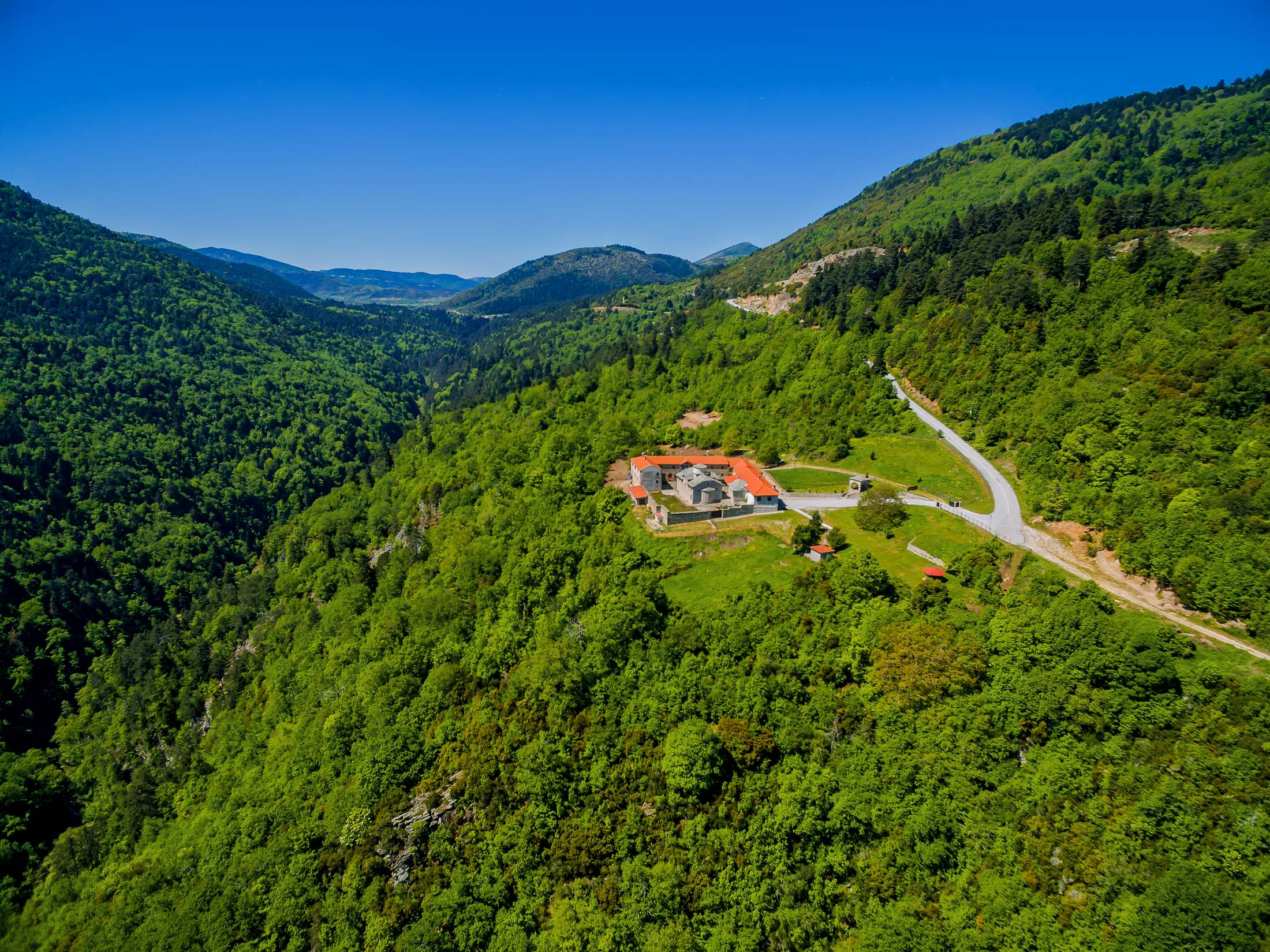
Kanalon Monastery is in a panoramic location on the south-east side of Olympus and is only 6km from Karya village. Its name derives from the four streams/canals, whose springs were near the monastery and all together formed the river Ziliana. The monastery is framed by dense woods with fir trees, stone pines and oak trees. The monastery was in ruins and its cells deserted until September 2001, when its renovation work was completed and nuns reopened its doors to the public. Inside the churchyard is the chapel of Agios Dimitrios from 1681 with beautiful murals. Its katholikon, dedicated to the Birth of the Virgin Mary, is a three-aisled dome-covered church that was rebuilt in 1883.
Agia Triada-Sparmos monastery

The Sparmou Monastery is situated on the slopes of Olympus and was built in the 16th century. In the 18th century it had about 150 monks and a huge estate. Its katholikon is a small aisleless basilica with a narthex dedicated to the Holy Trinity and adorned with lovely murals from the 19th century.
Cave Hermitage of Pythio
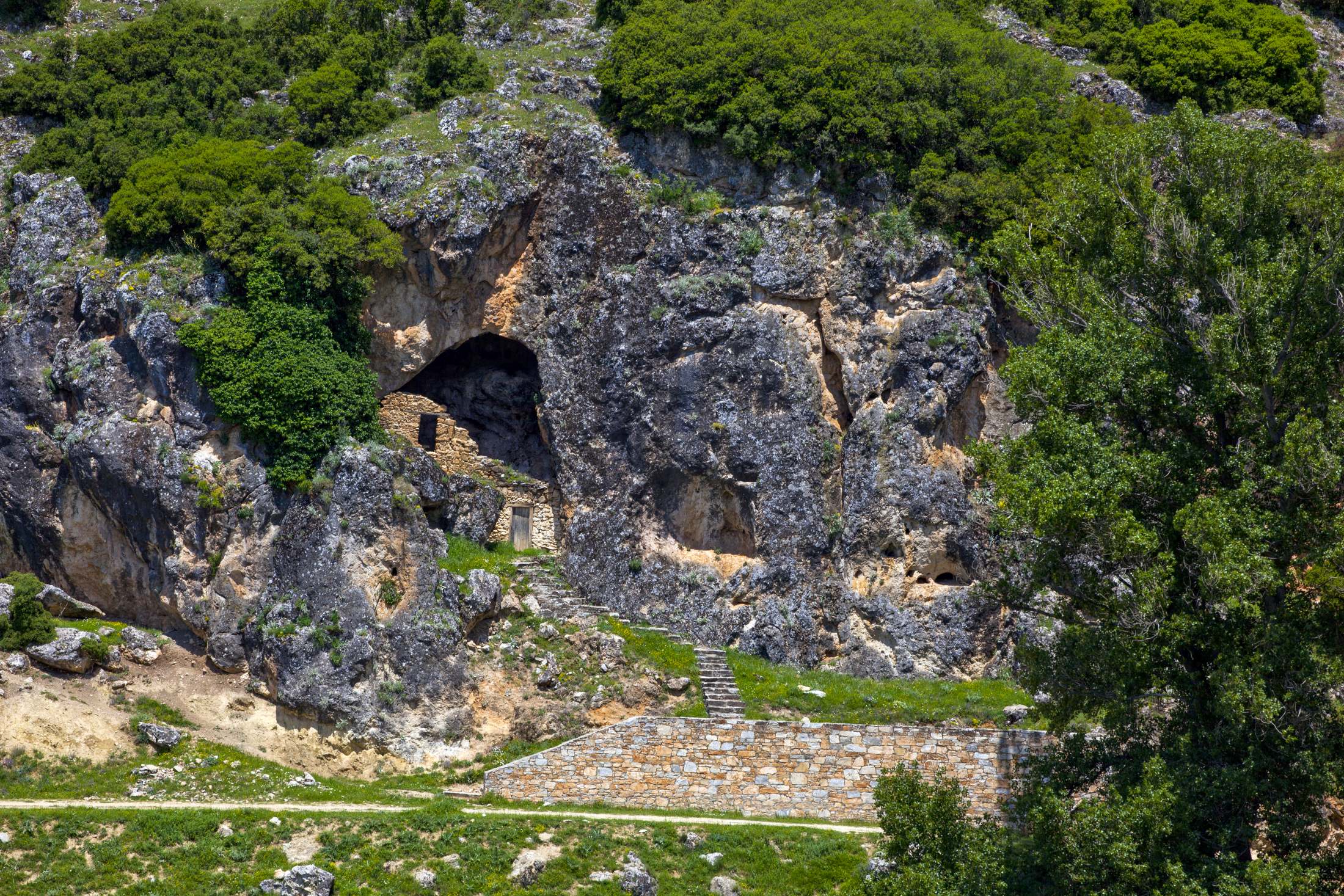
At the western plateaus of Olympus, close to Pythio village, two small chapels are preserved inside caves which were ascetic dwellings of anchorite monks. Murals dating back to the 14th century are still evident on the walls.
Church of Agios Nikolaos | Tsaritsani
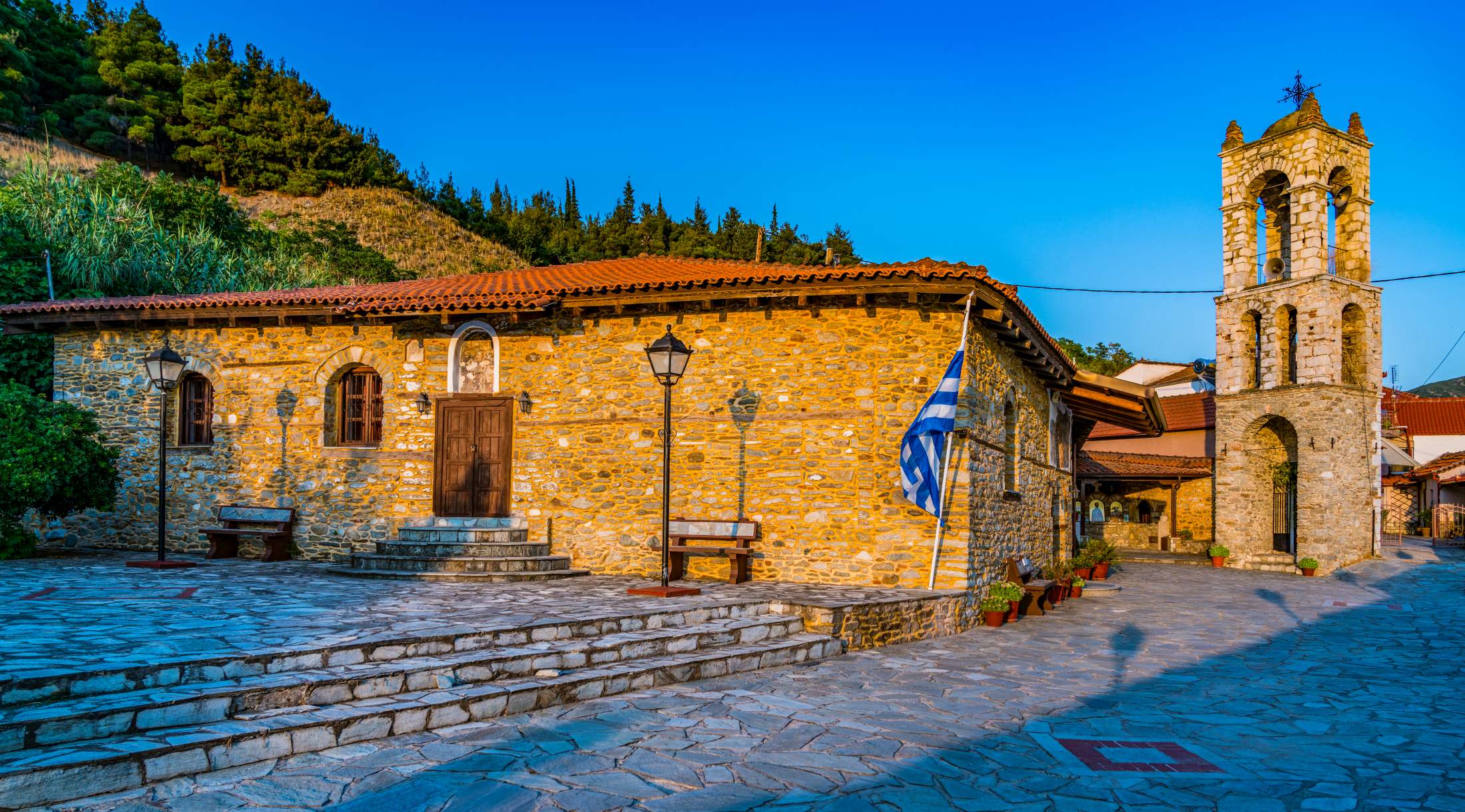
The church of Agios Nikolaos at Tsaritsani was built in the 16th century. Internally, the church is covered in rare murals. Particularly noteworthy is the ‘zodiac’P, the ‘time of year’, and the ‘root of Jesse’, a huge composition that is 5.5m long and includes ninety figures, amongst which twelve full-size wise men from Antiquity.
Pythio
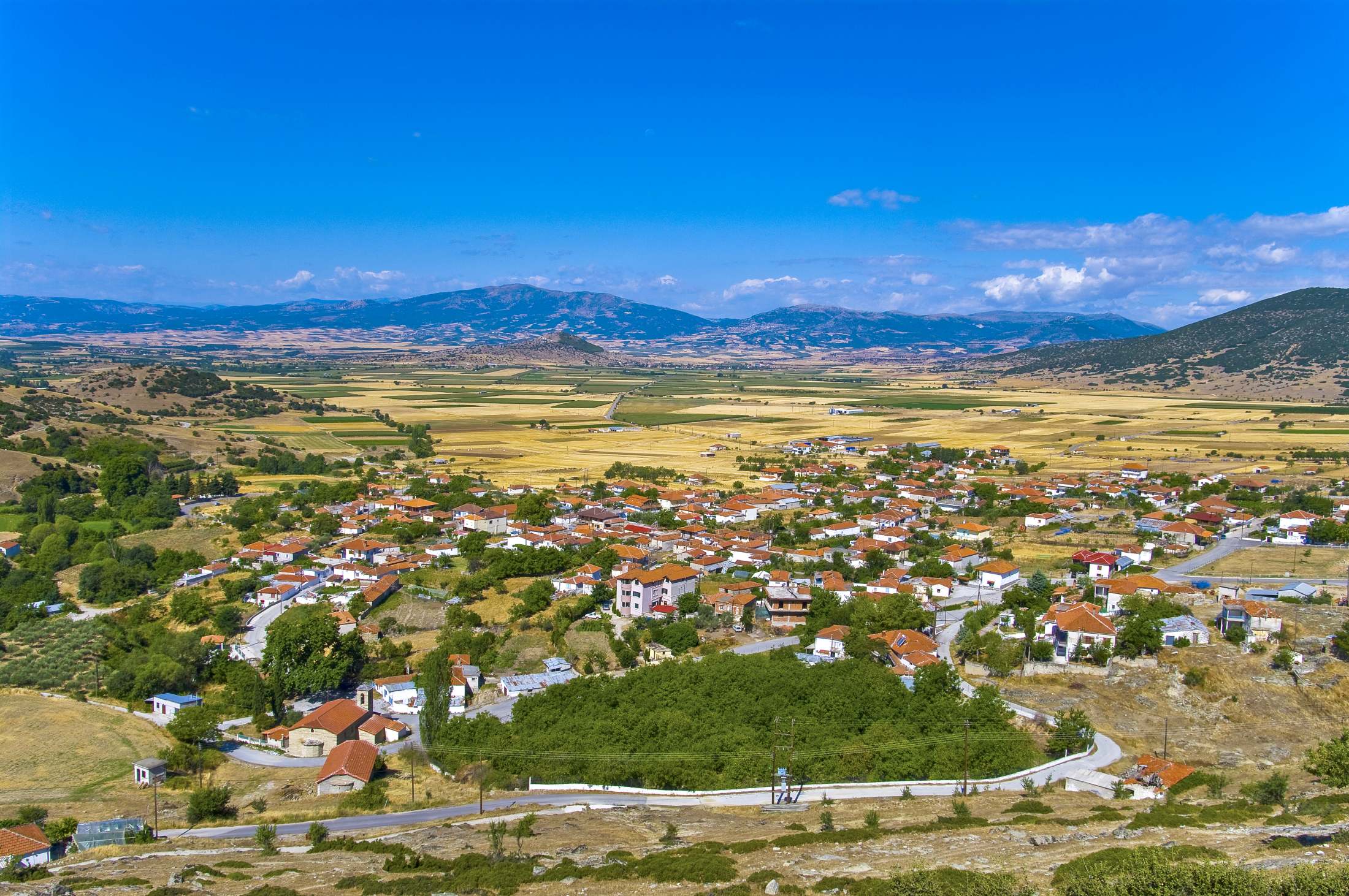
The village of Pythio is built in the western part of Olympus’s foothills. A political and religious center for the Perraivians, it was, also, one of the three cities forming the Perraivian Tripolitida.
Tsaritsani
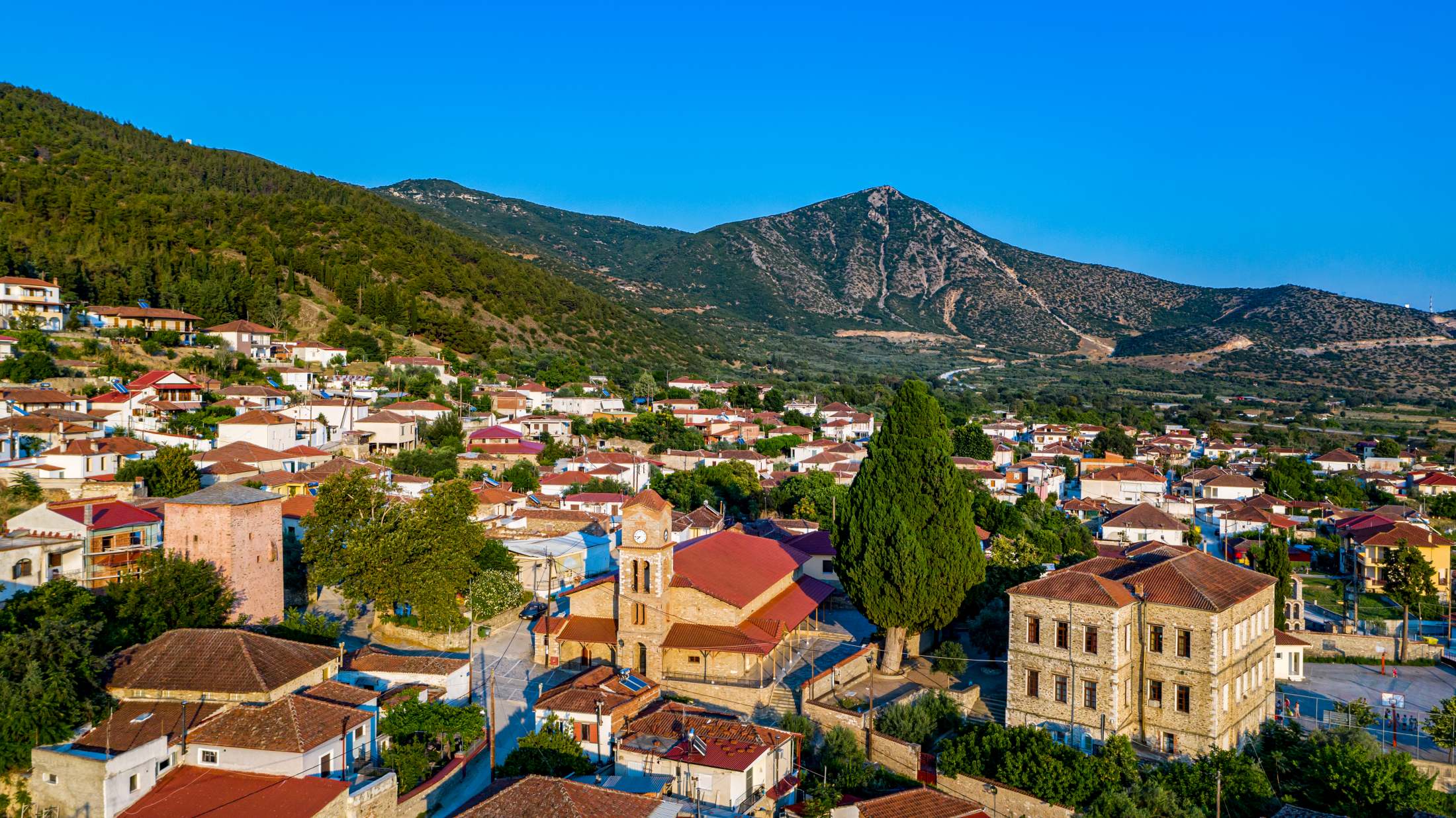
In the plain of Elassona and at a short distance from the town, we come to Tsaritsani that is famous for its greatness in the arts and letters. It reached its peak development in 1750 to 1830, when its residents became involved in red-cotton dying and silk farming.
The village is split down the middle by the Xairias stream and there is a bridge connecting its two parts. The large building, behind the statue of the teacher of the nation and benefactor of Tsaritsani, Konstantinos Oikonomou Ex’ Oikonomon, is the Oikonomios School that was built in 1910 on the ruins of his home.
Kokkinopilos
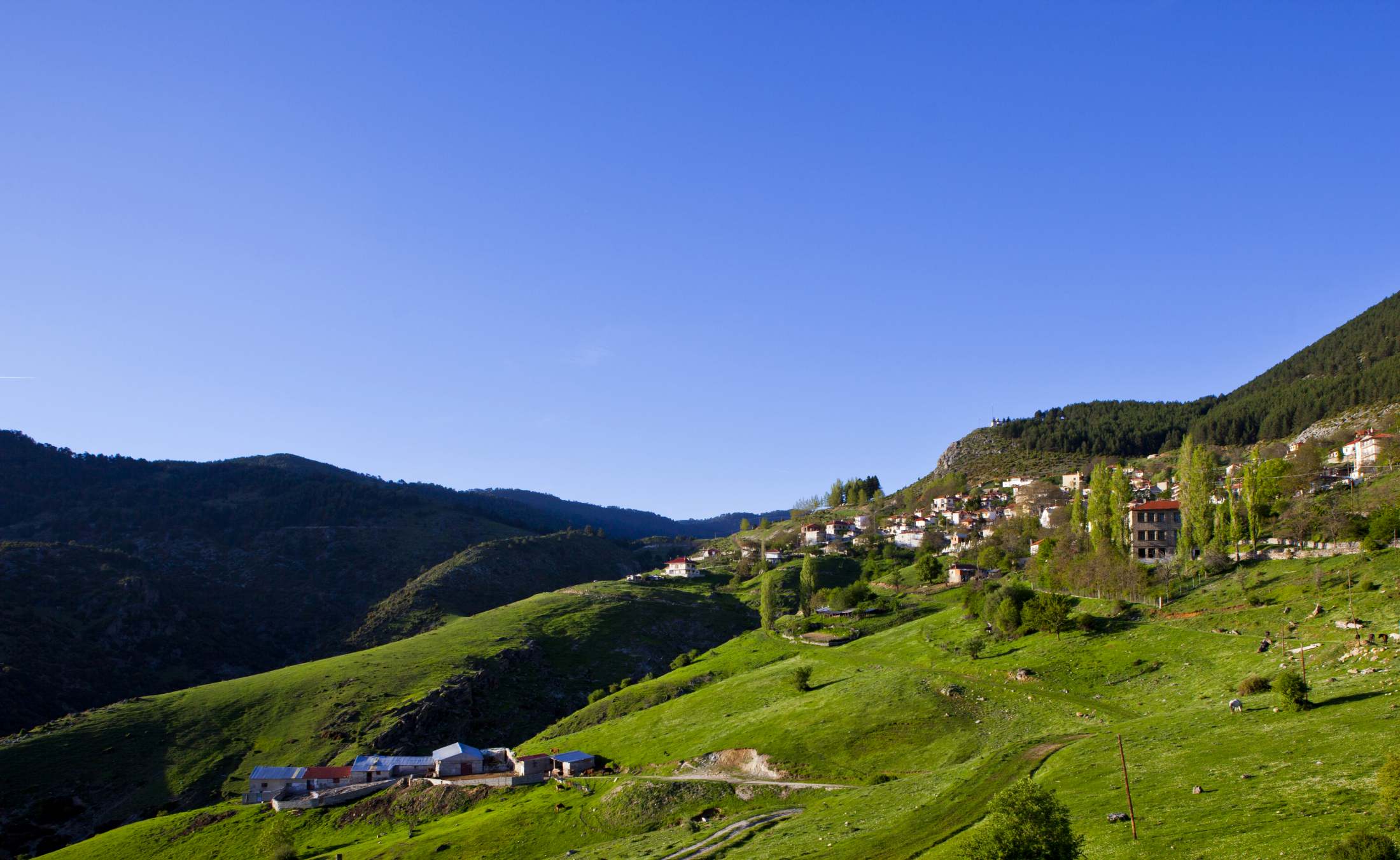
The village Kokkinoplos or Kokkinopilos has become a holiday and relaxation spot, since it is the highest village on Olympus. It has an altitude of 1150m and its stone-built houses hanging from the mountain slopes create an impressive setting. Its name is linked to kokkinochoma (= red soil), which is an important substance for the village. Due to the region’s particular soil consistency, the local people are involved in the production of lime, apart from stock-breeding, wood-cutting and farming.
Mamali | Verdikousia
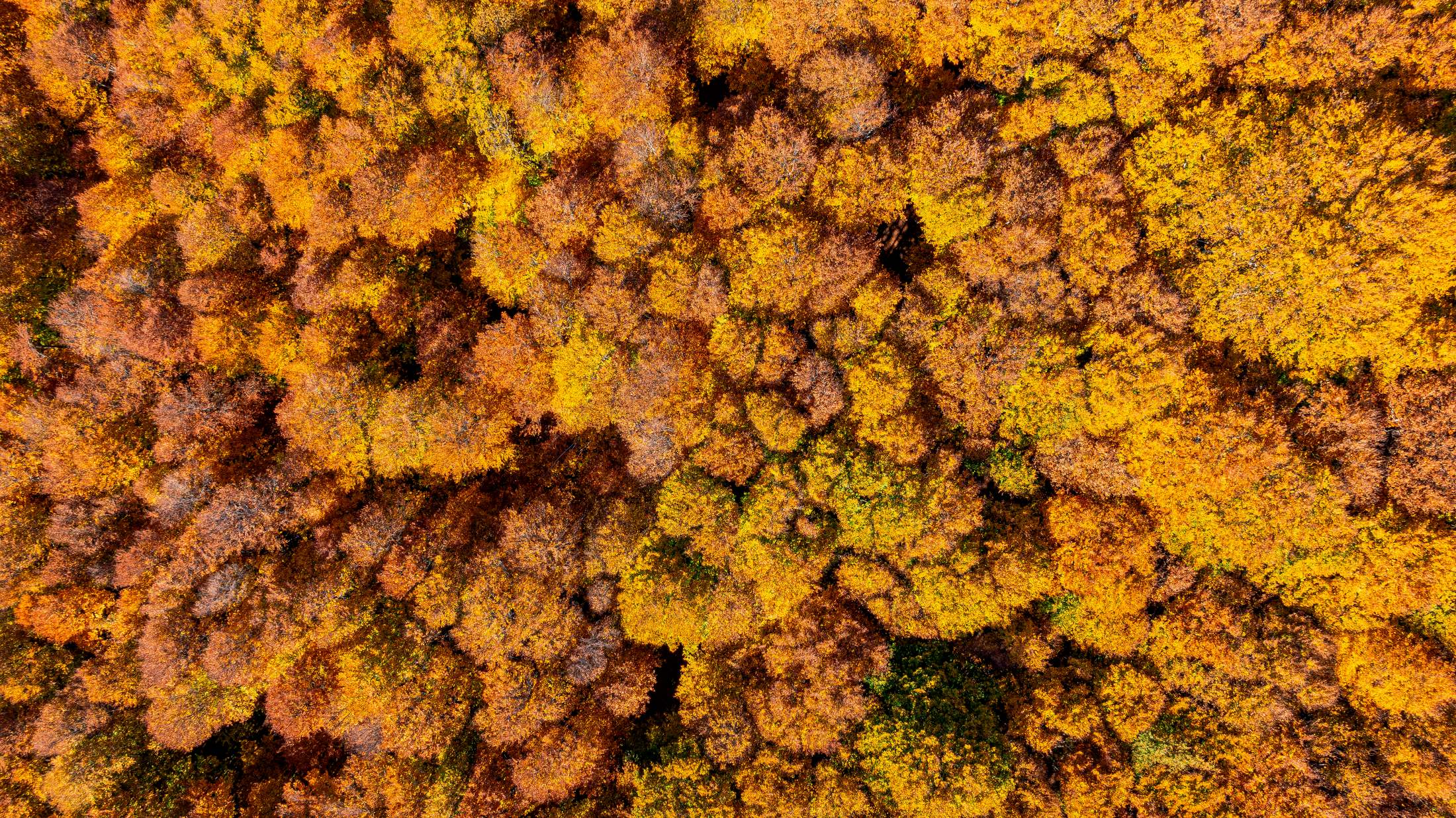
The Mamali forest, outside Verdikousia, is a natural paradise for nature lovers and adventure seekers. Every year, it hosts the Mountain Enduro Camp, a three-day camping festival that brings together enduro riders from all over Greece, offering routes through dense vegetation and impressive landscapes.
In addition to sporting activities, the area is also of historical importance, as the summit of Mamali is in very good condition, an old stone Ottoman border guard post, known as the “Kazarma.” The area of Elassona was liberated from the Turks in 1912.
Mamali combines natural beauty with historical memory, offering a complete experience for visitors.
Archaeological site of Sarantaporo
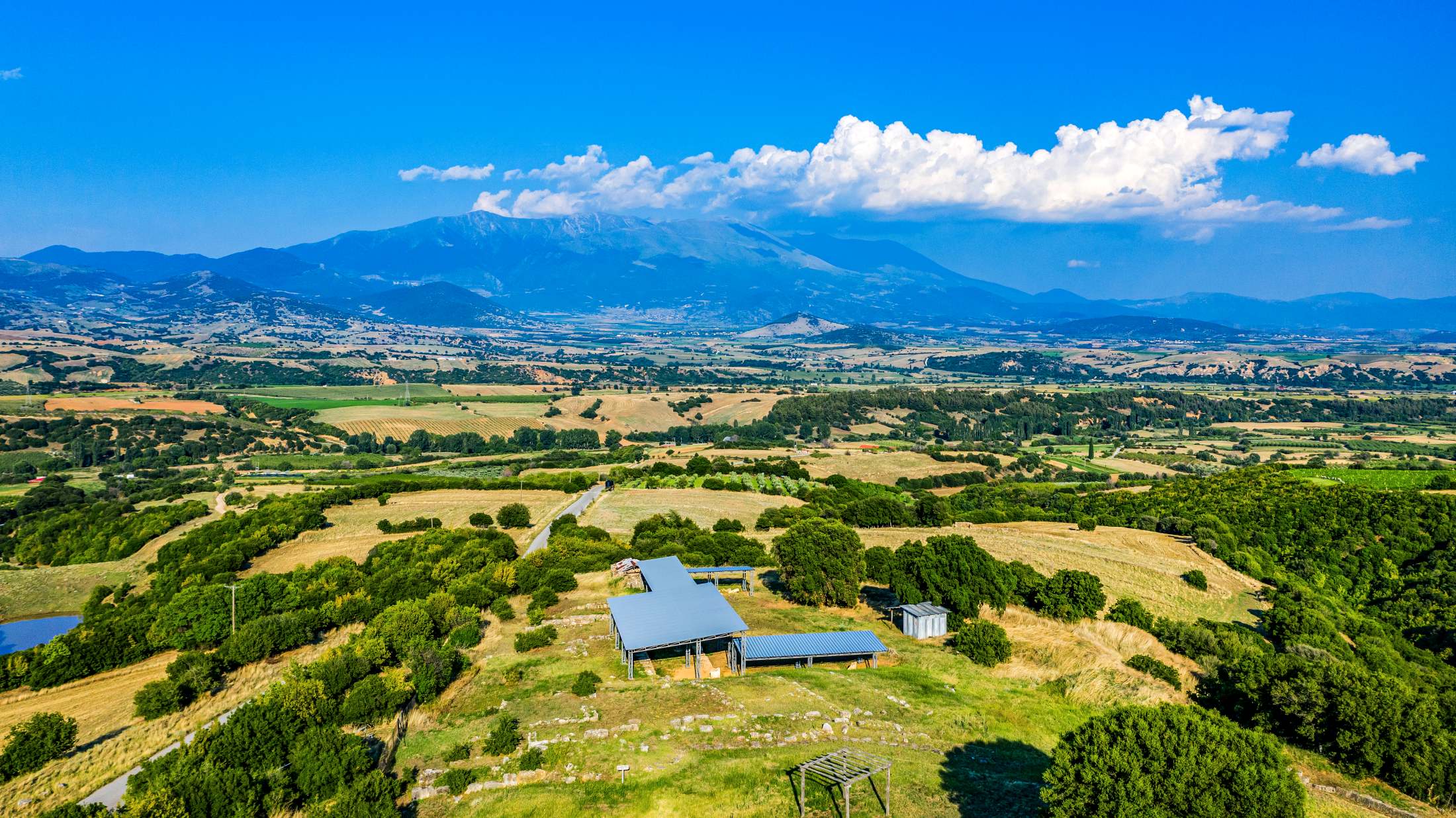
Sarantaporo, in northern Thessaly, is home to an important archaeological site that reveals the history of the region from antiquity to the byzantine era.
The ruins of an ancient city surrounded by a strong wall dating back to the 3rd century BC have been preserved in the area. In the center of the city, a public complex with a portico of porphyry columns has been uncovered, offering a view of Mount Olympus. Nearby is Kastri of Dolichi, a fortified acropolis from the early byzantine period, where parts of walls, early christian basilicas, and other buildings have been excavated. These sites have been excavated by the Larissa Antiquities Authority and are important monuments of the region’s cultural heritage.
Monastery of Valetsiko (Agios Dimitrios) | Tsaritsani
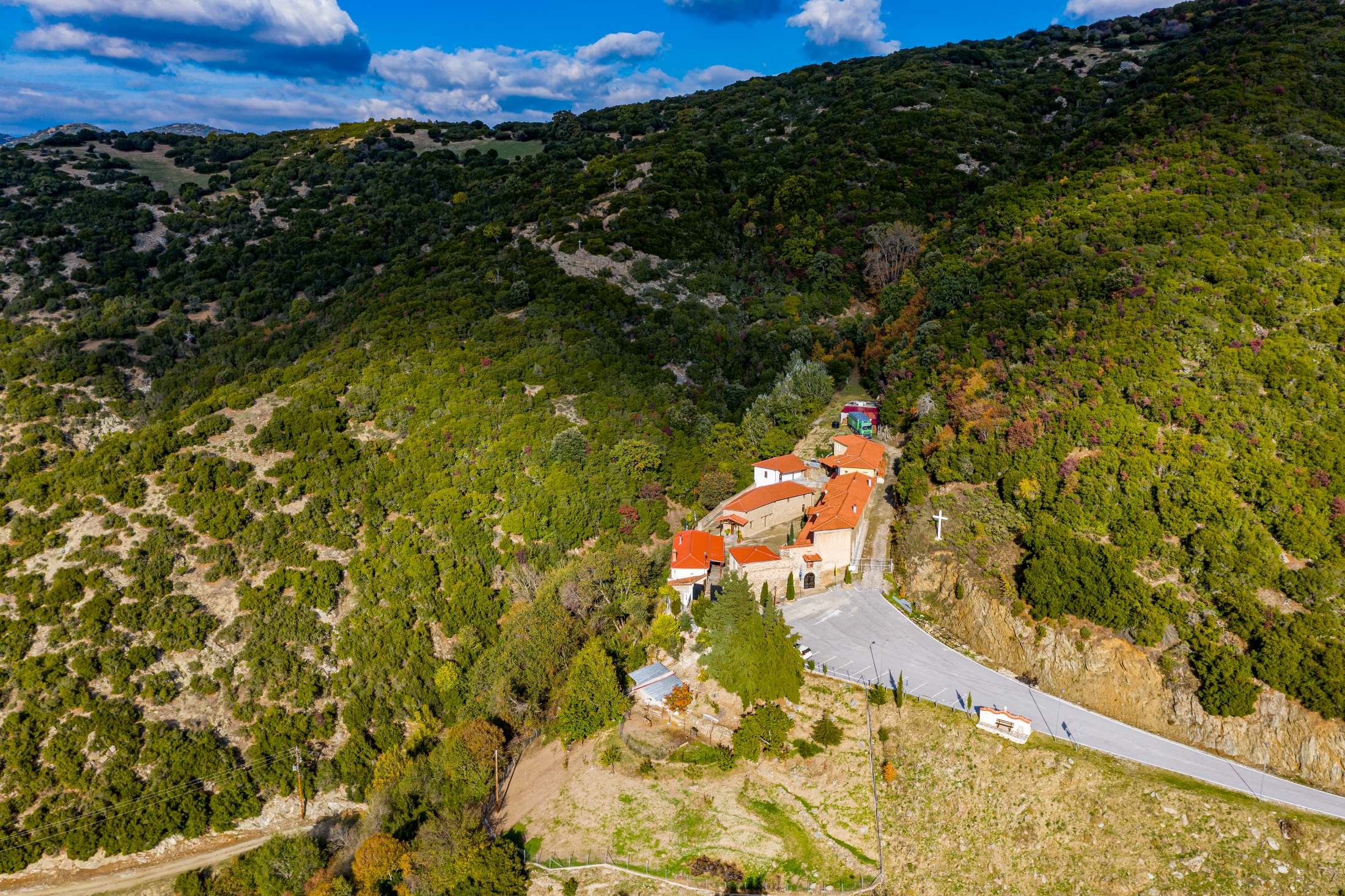
The Monastery of Agios Dimitrios “Valetsiko” of Tsaritsani, built on a steep slope covered with wild vegetation at an altitude of 800 m, a few kilometers from Tsaritsani, is one of the most important spiritual and historical centers of the region. Its foundation dates back to byzantine times, with tradition characterizing it as a “thousand-year-old monastery.” Its katholikon, built in the 14th century by the Serbian despot Symeon Uresis, preserves important frescoes and the miraculous icon of Agios Dimitrios. Throughout history, the monastery has been a refuge for fighters, a place of resistance and spiritual revival, hosting personalities such as Agios Kosmas of Aetolia. It played an important role in the Macedonian Struggle and the National Resistance, and is visually and operationally linked to other monasteries in the area. Despite the destruction of the 20th century, it was renovated and repopulated in 2015, continuing its rich tradition as a living monument of faith and history.
Monastery of Paleokarya | Krania
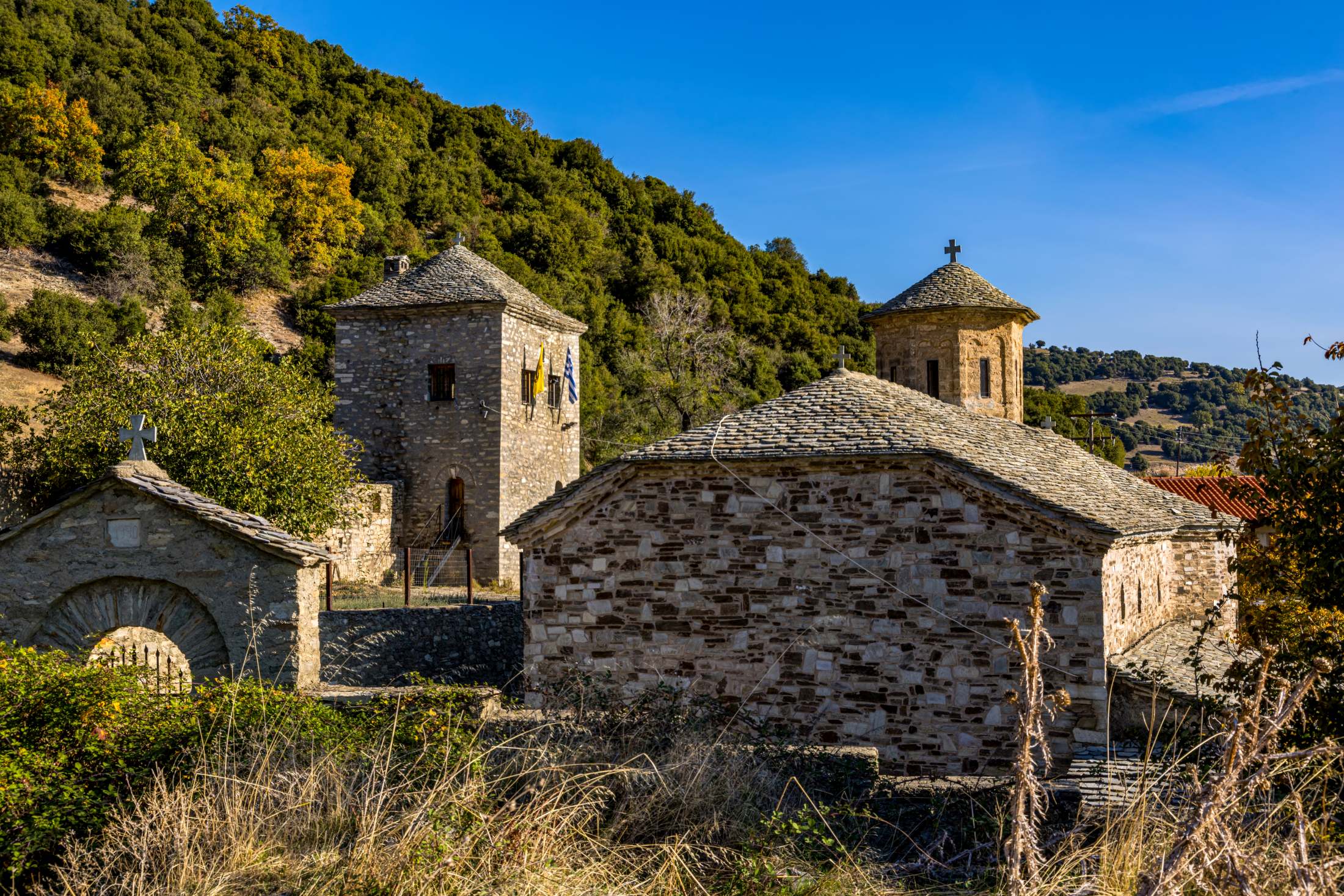
The Metamorfosis tou Sotiros Monastery (known as Moni Paleokaryas), near Krania in Elassona. Built in 1630. Only the katholikon and one tower still exist today.
Domeniko
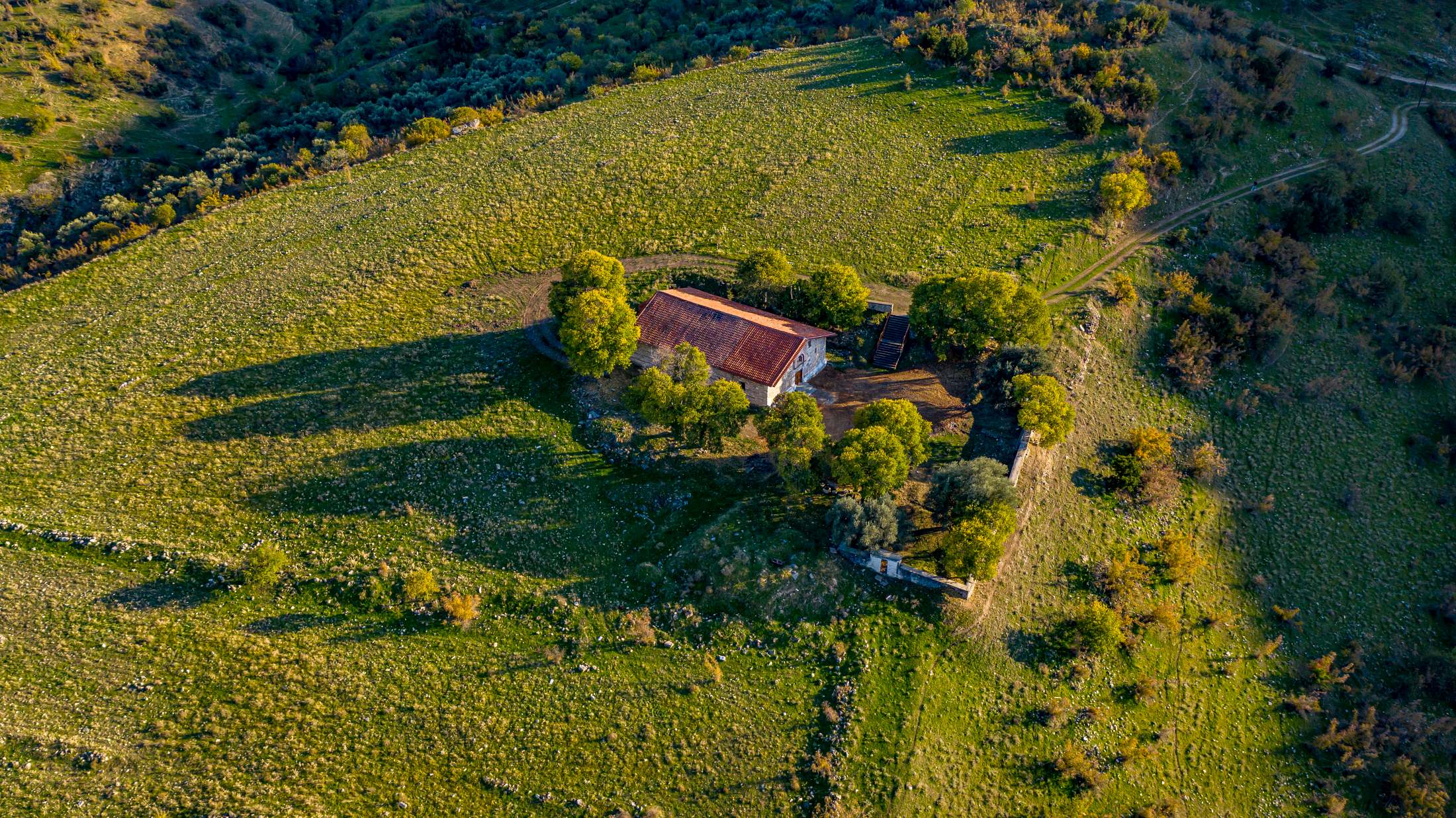
Domeniko, a lively settlement in the municipality of Elassona, is located in a semi-mountainous area west of the Titarisios river and retains its strong historical and religious character. It is one of the official martyr villages of Greece, as in February 1943 it was the site of executions and arson by German occupation troops, with dozens of civilians losing their lives and most of the settlement being destroyed. The religious landscape of the village is also particularly rich. The central church is Agios Georgios, an important post-Byzantine church with remarkable frescoes and architectural features. According to the Ministry of Culture, it is a characteristic example of 17th-century ecclesiastical architecture in Thessaly. Just outside the village, in a cool natural landscape with plane trees and mulberry trees, stands Panagia Vryzostis (dated 1607–1611), with a magnificent view of the Potamia plain. Next to it are the ruins of an old watermill, reminding us of the importance of the area for local agricultural production.
Lake Kefalovrysso
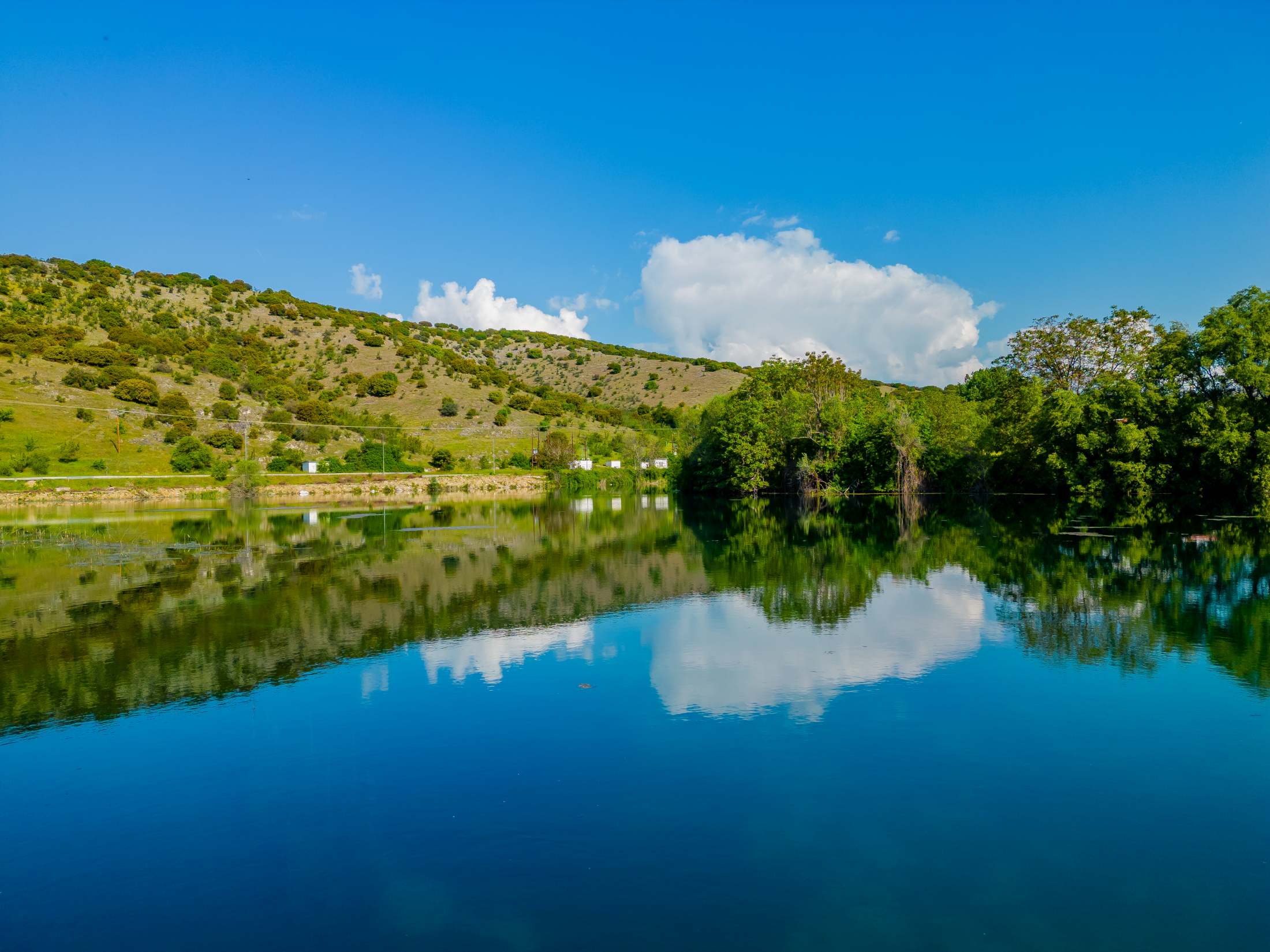
The reservoir, next to Kefalovryso village, has a surface area of 25,000m2. Its water springs from the slopes of Titarios and flows to Pinios. Grey mullets, barbels, trout and crayfish live in the lake water and are sampled by the locals and visitors to the area.
Monastery of Analipsi | Kalyvia Analipseos
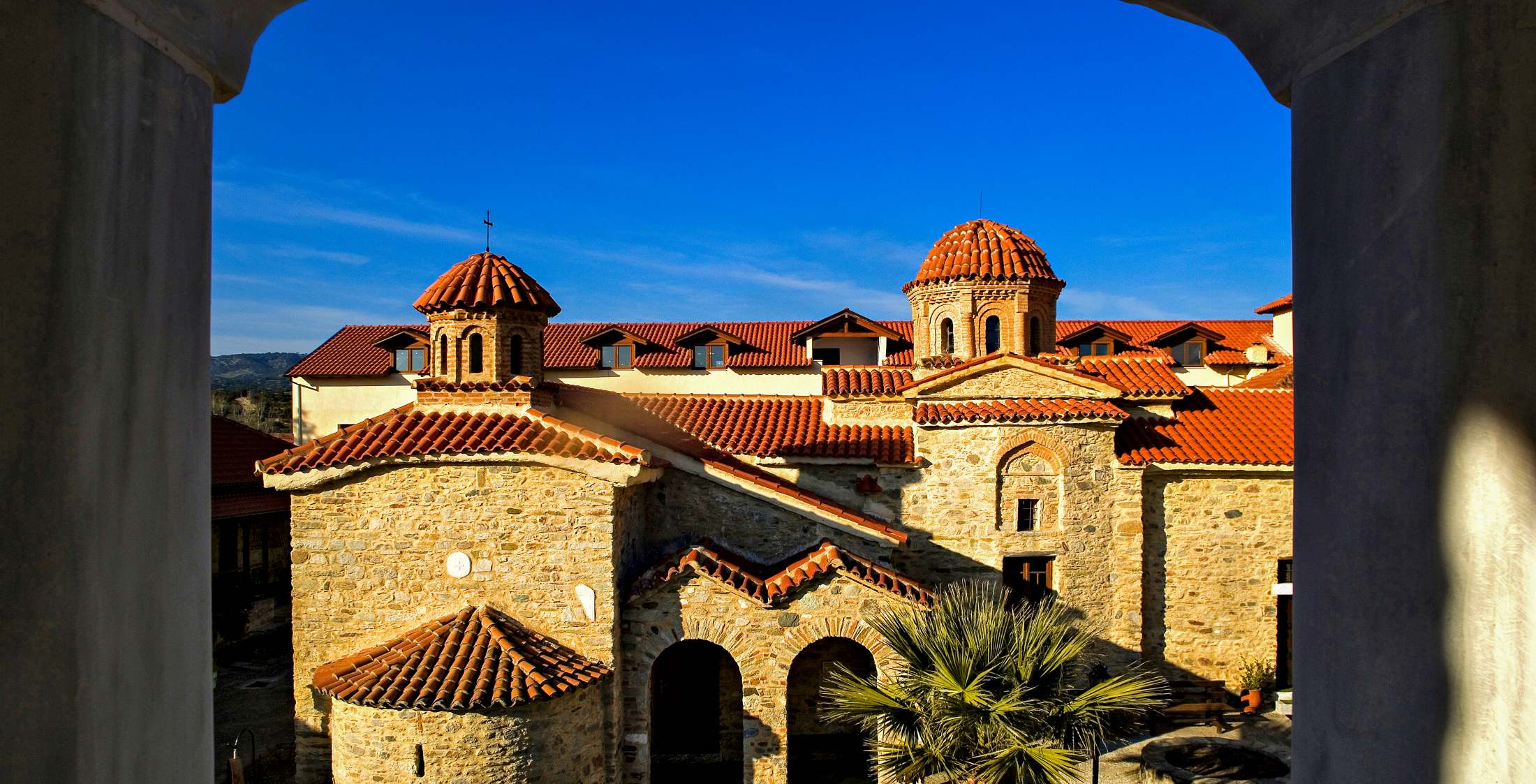
Just three kilometers west of Sykea Elassona, the Holy Monastery of the Analispeos of Sotiros (Ascension of the Savior) is an important religious and historical destination in northern Thessaly. Although it bears the name of the Dormition of the Virgin Mary, it celebrates the Ascension, linking its presence to deep spiritual roots. Founded in the 17th century by the monks Ioakeim, Ioannis, and Dionysios, the monastery was a beacon of faith and resistance during the ottoman occupation.
The monastery’s katholicon is cruciform with an impressive octagonal dome and houses an exquisitely carved wooden iconostasis and frescoes from 1650 depicting scenes from the divine liturgy and figures of saints. Inside the narthex, the small holy spring with its well, which according to tradition was filled only on the monastery’s feast day, still attracts many faithful today. Since 1988, a women’s sisterhood has been zealously continuing the restoration and spiritual life of the Monastery of Analipseos of Sotiros, keeping alive the religious imprint of the area.
Monastery of Agia Triada | Giannota
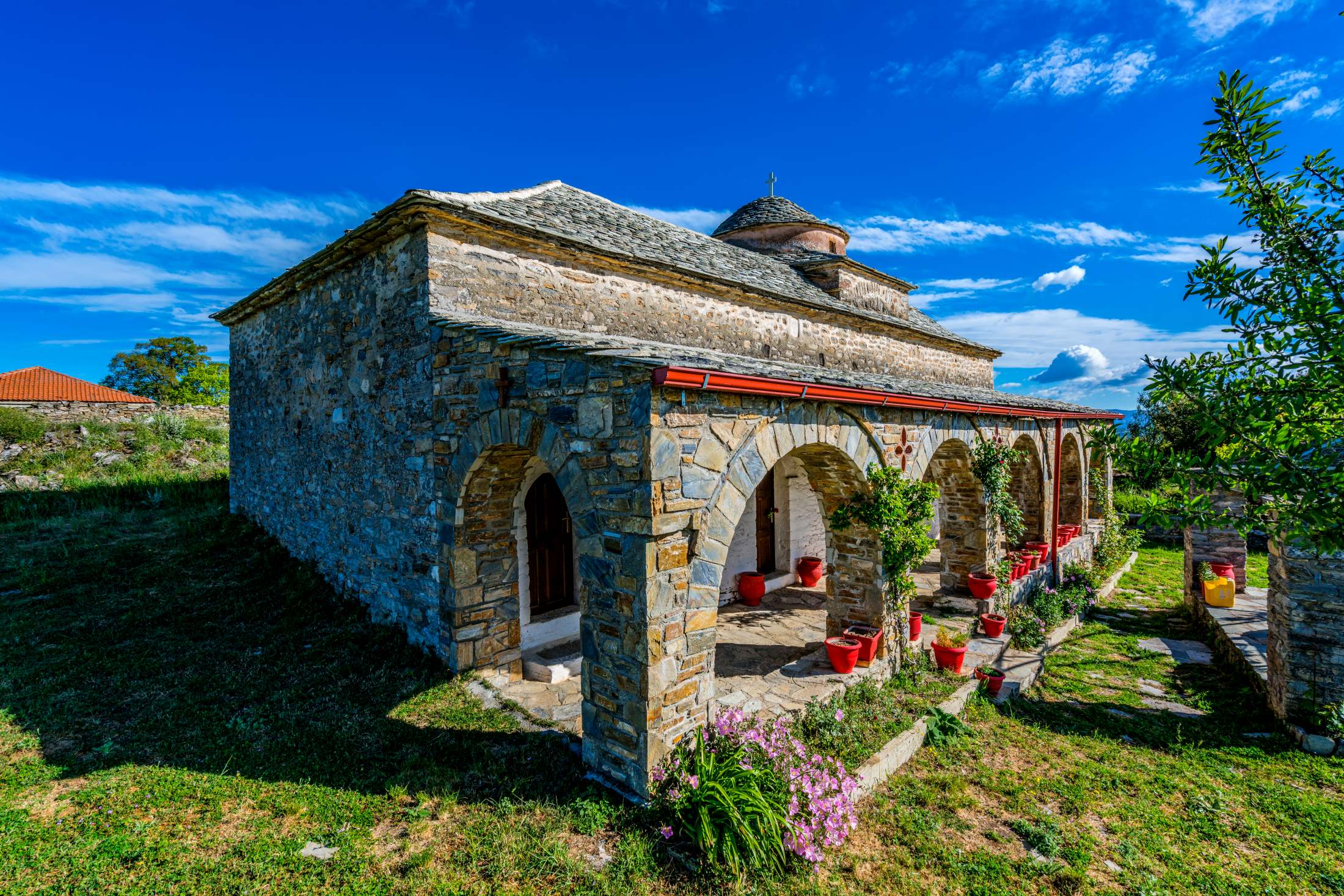
External aspect and murals from the katholikon of the Holy Monastery of the Holy Trinity in Giannota that was preserved after the fire in 1866. The monastery was built in 1755.
Olympus Ski Center (Vrysopoules)
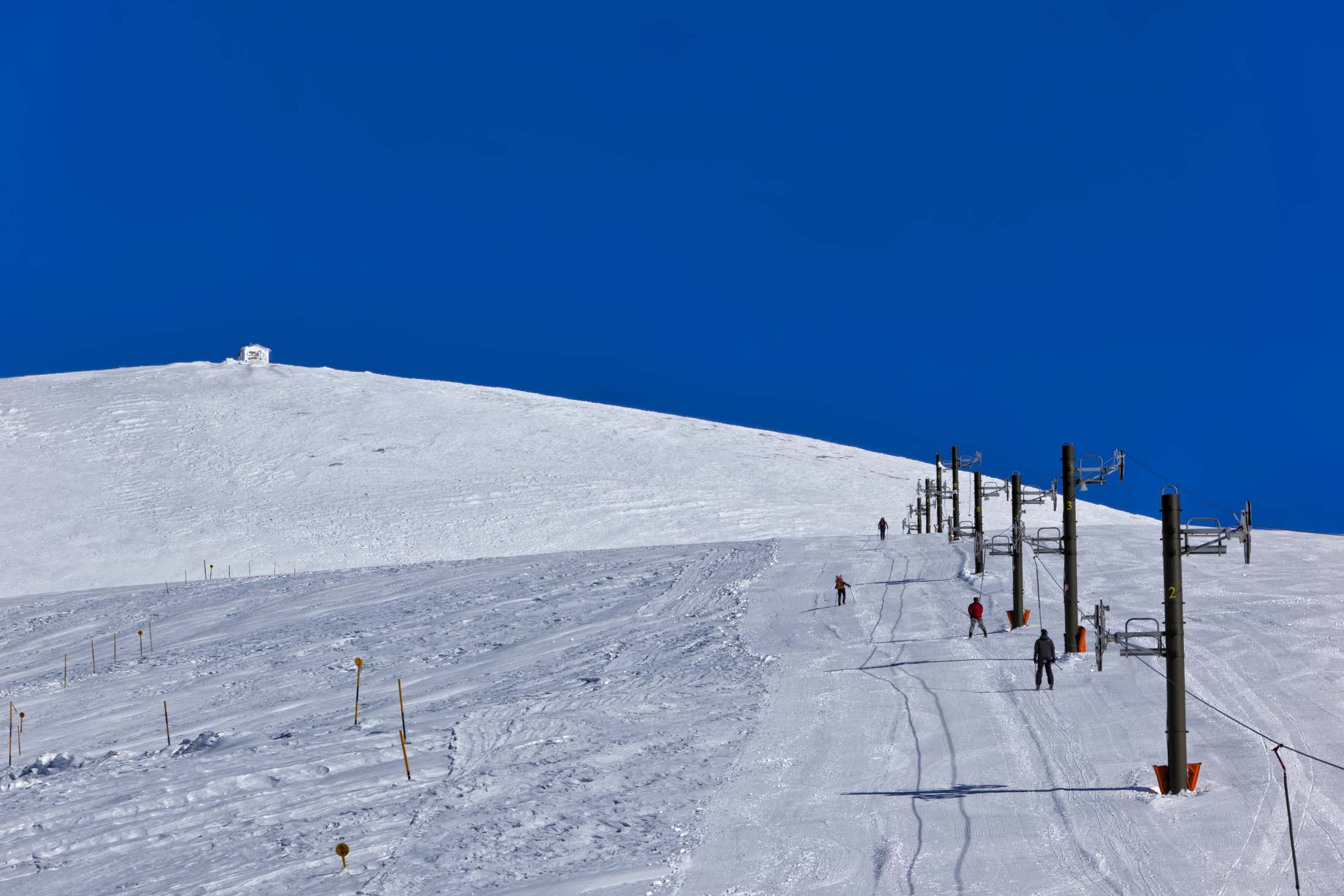
The Vrysopoules Ski Center (Vrysopoules) belongs to the Greek army and is the only ski resort on Olympus. It was established in 1934 and has been used for training Greek army officers since 1960, at an altitude of 1.805 m, over the “Mavratza” gorge on the southern side of Olympus, we come across the Vrysopoules refuge. It’s located on the installations of the Military Alpine Combat and Ski Training Center (KEOAX). Visitors must show a valid identification form in order to enter, while overnight stays require special permission from the Special Forces Directorate. With a hosting capacity of up to 30 persons, the Vrysopoules refuge features a restaurant and is accessible by car, albeit all vehicles must be parked outside the military base. The Olympus Ski Center is still in operation on the premises of KEOAX. It features three slopes (red) with three lifts (two T-bar single seat lifts and one baby lift) whose use is provided free of charge to the public.
Mount Olympus
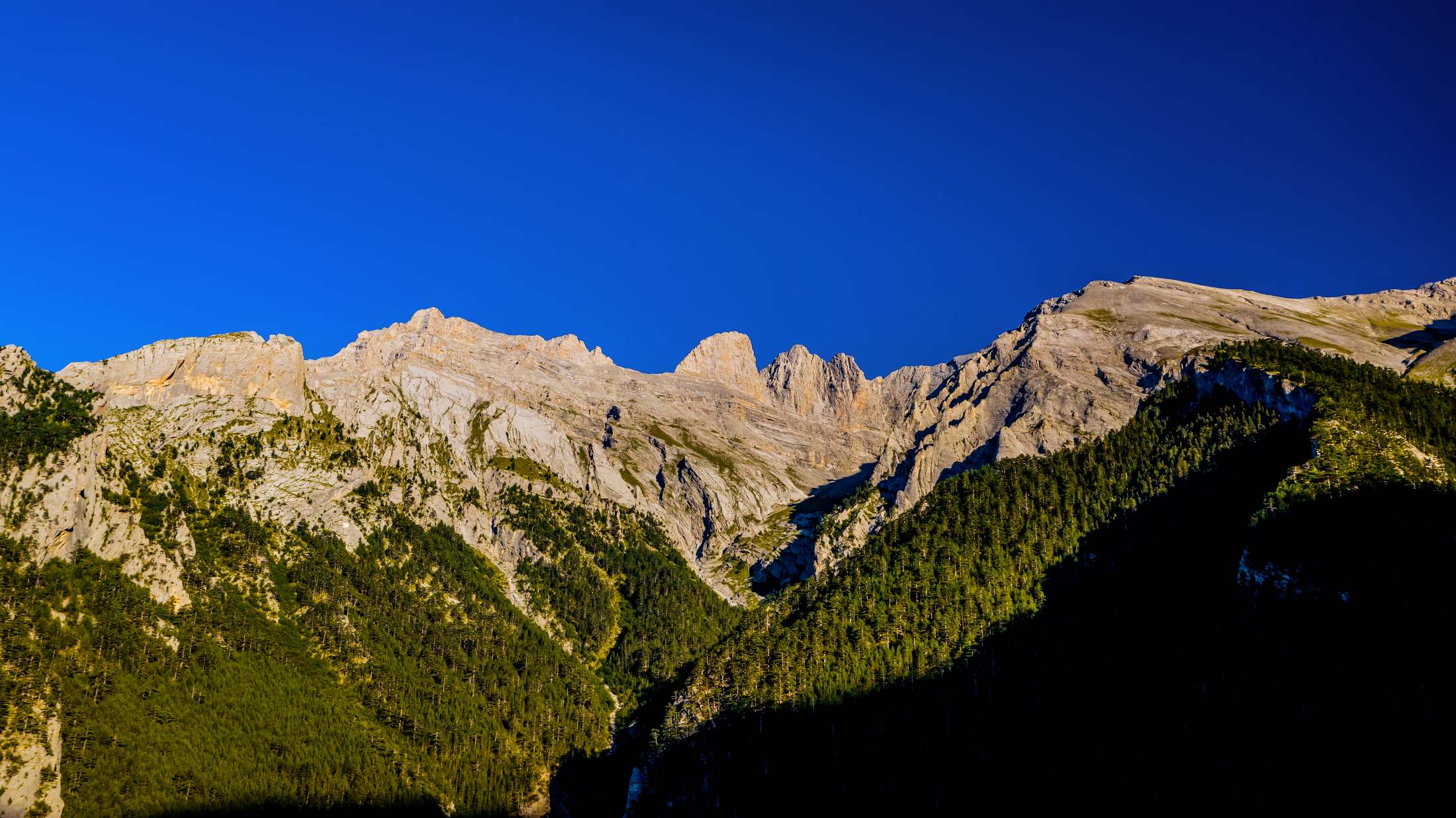
Thessalian Olympus, the eastern side of the mythical mountain, offers visitors a unique experience of natural beauty and cultural heritage. Access from Elassona is easy, making it an ideal starting point for exploration. The Olympus National Park, the first to be established in Greece in 1938, is home to a rich biodiversity with more than 1,700 plant species, many of which are endemic. The park’s trails lead through forests, gorges, and alpine landscapes, offering unforgettable experiences for hikers and nature lovers. The Olympus area is home to important monasteries of historical and religious significance.
The byzantine monastery of Panagia Olympiotissa is the most important of these. The monasteries of Agia Triada Sparmou, Theotokou Kanalon, Agia Triada Livadiou, and Agios Dimitrios Valetsiko are also interesting. Most were built or renovated in the 17th and 18th centuries, a period of flourishing monasticism in the area around Olympus and in Thessaly in general. Also of interest are the Catholic churches (central churches) of several dissolved monasteries, such as Agios Athanasios in Tsaritsani and Agios Antonios in Kokkinogi. The natural landscape of thessalian Olympus is characterized by alternating forests, alpine meadows, and steep peaks, providing refuge for rare species of fauna and flora. The area is also known for its livestock farming tradition, producing renowned local products such as Elassona feta cheese, honey, and aromatic herbs, which are an integral part of the local cuisine. Thessalian Olympus harmoniously combines natural beauty, historical heritage, and traditional life, offering a complete experience for visitors seeking both adventure and cultural discovery.
